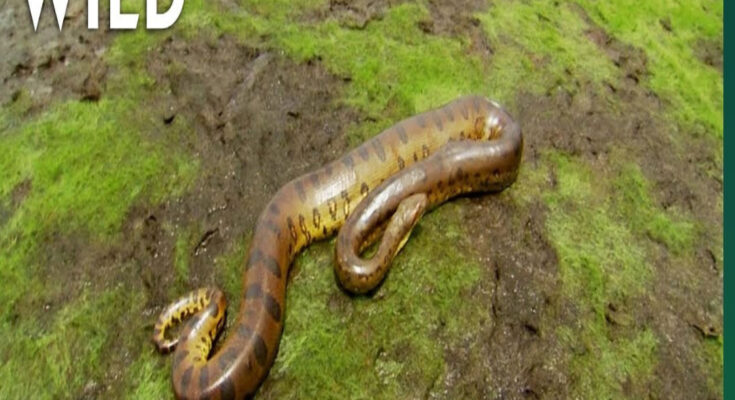In the dense, humid rainforests and murky waters of South America, an imposing predator reigns supreme: the anaconda. Known as the heavyweight of snakes, anacondas are not only the largest and heaviest snakes in the world, but they also embody a fascinating combination of power, stealth, and adaptability. Their sheer size and formidable hunting techniques make them a subject of awe and intrigue, symbolizing the raw, untamed beauty of the natural world.
A Gigantic Presence
The anaconda, particularly the green anaconda (Eunectes murinus), is renowned for its immense size. On average, these serpents can grow to be over 20 feet long, with some specimens reportedly reaching lengths of up to 30 feet. They can weigh over 500 pounds, making them the heaviest snakes on the planet. Unlike other large snakes such as pythons, which achieve great lengths but remain relatively slender, anacondas are robust and muscular, equipped to constrict and subdue large prey.
A Master of the Waters
Adapted to life in water, anacondas are excellent swimmers. Their natural habitat includes rivers, swamps, and marshes, where they spend a significant portion of their lives submerged. This aquatic environment not only supports their massive weight but also aids in their hunting strategy. With eyes and nostrils located on the top of their heads, anacondas can remain nearly completely submerged while stalking prey, an adaptation that allows them to approach undetected.
The Art of Ambush
Anacondas are ambush predators, relying on their immense strength to overpower their prey. Their diet is diverse, including fish, birds, mammals, and even caimans and jaguars. They employ a method of hunting that involves lying in wait, often in water, before striking with lightning speed. Once they seize their prey with their powerful jaws, anacondas use constriction to subdue it. Their muscular bodies coil around the victim, tightening with each breath the prey takes until it succumbs to asphyxiation.
Myth and Reality
The anaconda has occupied a prominent place in human imagination and culture, often depicted as a creature of monstrous proportions and insatiable appetite. These depictions, fueled by folklore and sensational media, have painted anacondas as dangerous man-eaters. While it is true that anacondas are capable of consuming large animals, instances of attacks on humans are exceedingly rare and often exaggerated. In reality, anacondas tend to avoid human interaction and pose little threat unless provoked or threatened.
Conservation and Challenges
Despite their formidable presence, anacondas face significant threats from human activity. Habitat destruction due to deforestation, pollution, and encroachment by human settlements has reduced their natural habitat. Additionally, they are hunted for their skin and killed out of fear. Conservation efforts are essential to protect these magnificent creatures and ensure they continue to thrive in their natural environments. Preserving their habitats and promoting coexistence between humans and wildlife are critical steps in maintaining the ecological balance.
Conclusion
The anaconda, with its unparalleled size and strength, stands as a testament to the incredible diversity and adaptability of life on Earth. As the heavyweight champion of the snake world, it plays a crucial role in its ecosystem, controlling the populations of various species and maintaining the health of its habitat. Understanding and respecting these remarkable reptiles can help dispel myths and foster a deeper appreciation for the natural world, encouraging efforts to protect and preserve the delicate balance of our planet’s ecosystems.



